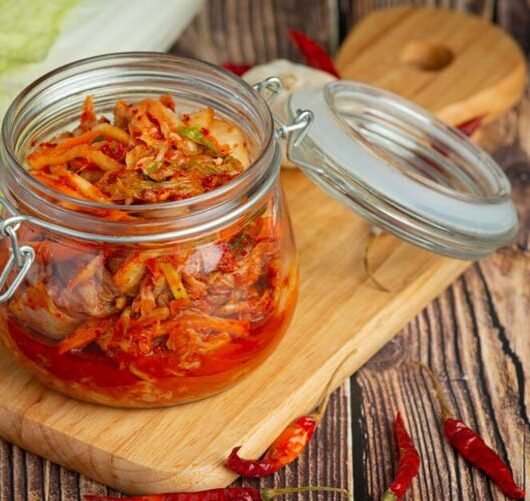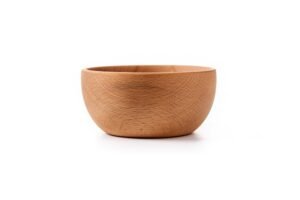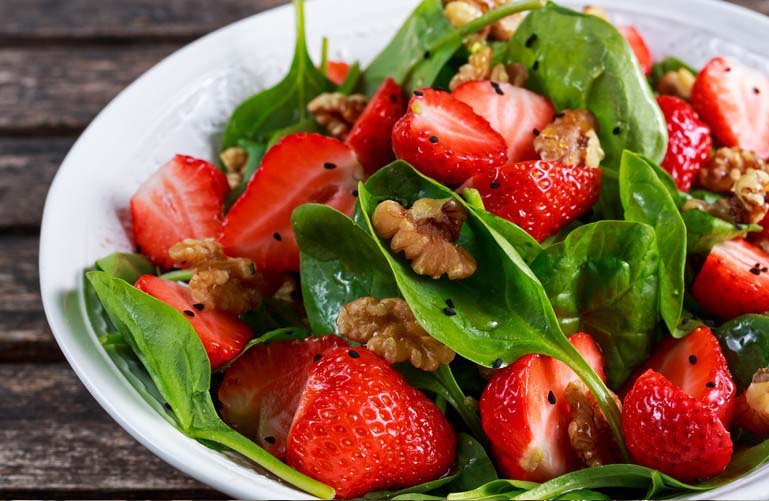Homemade Kimchi recipe. This fermentation of bok choy, daikon radish, carrots and a blend of seasonings offers an explosion of flavors that will delight your senses. From the spiciness of red chili to the fresh touch of ginger and garlic, every bite of this homemade kimchi is a delicious experience.
Follow our simple steps and surprise your palate with this classic of Korean cuisine, perfect to accompany your favorite dishes or as a star ingredient in new culinary creations. Get ready to discover the authentic taste of homemade kimchi!

Kimchi and health benefits
The kimchi recipe, being a fermented food made primarily from vegetables such as Chinese cabbage and daikon radish, offers a range of health benefits. Some of these benefits may include:
- probiotics Kimchi is an excellent source of probiotics, which are beneficial bacteria that can help maintain a healthy balance of microorganisms in the gut. This can improve digestive health and strengthen the immune system.
- fiber The vegetables used in the kimchi recipe, such as Chinese cabbage and carrots, are rich in dietary fiber. Fiber is important for digestive health and can help prevent constipation, promote bowel regularity, and support heart health.
- Vitamins and minerals Kimchi can be a good source of vitamins and minerals, depending on the ingredients used in the recipe. For example, Chinese cabbage is rich in vitamin C, vitamin K, and folate, while daikon radish can provide vitamin C and potassium.
- Antioxidants Some of the ingredients used in the kimchi recipe, such as garlic and ginger, are known for their antioxidant properties. Antioxidants can help protect the body's cells from damage caused by free radicals, which may reduce the risk of chronic diseases such as heart disease and cancer.
- Low calories Kimchi is relatively low in calories, making it a healthy option for those looking to control their calorie intake while enjoying a tasty and nutritious food.
Overall, kimchi is a versatile and nutritious food that can benefit health in a variety of ways when incorporated into a balanced and varied diet.

History of Kimchi
Kimchi is a traditional Korean dish that has a rich and long history dating back centuries. Here's a brief history of this iconic recipe:
- Ancient Origins: Although the exact history of kimchi is difficult to trace due to a lack of written records, its origins are believed to date back more than 2,000 years ago on the Korean Peninsula. Ancient Koreans found a way to ferment and preserve vegetables, such as bok choy, to consume during the long, harsh winters.
- Fermentation as a Conservation Method: Kimchi developed as a way to preserve vegetables for long periods without refrigeration. Natural fermentation allowed the vegetables to be preserved for months, which was crucial in an agricultural society where fresh produce was only available during certain times of the year.
- Regional Varieties: Over time, kimchi diversified into different regional varieties throughout Korea. Each region developed its own unique version of kimchi, using local ingredients and specific preparation methods.
- Cultural Importance: Kimchi was not only a staple in the Korean diet but also held great cultural and social importance. It was part of traditional celebrations and rituals, and was considered an essential culinary skill for young women preparing for marriage.
- Global Diffusion: Over time, kimchi has become popular worldwide due to its delicious unique flavor and purported health benefits. It has gained international recognition as a probiotic fermented food that promotes digestive health and strengthens the immune system.
Today, kimchi remains an integral part of Korean cuisine and has gained followers worldwide. It is served as a side dish in a variety of traditional Korean dishes and is also incorporated into modern and fusion dishes, demonstrating its versatility and enduring popularity over time.
Maybe you might like: Red fruits salad
Image credit: Freepiks





